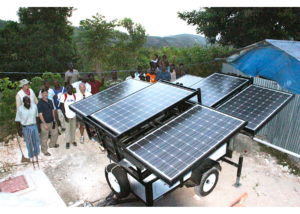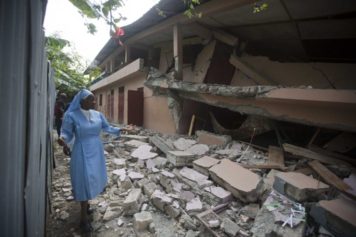
But Mirebalais is home to a new, well-lit public hospital that can hum with activity around the clock. Seven months after the world’s largest solar hospital opened its doors, its 1,800 rooftop solar panels have generated enough energy to charge more than 19,000 electric cars, run six surgical suites, attend to 60,029 patients and safely deliver more than 800 babies.
“The number of deliveries is a pretty substantial fact considering that approximately three-fourths of women in rural Haiti give birth at home. The hospital is helping to meet a substantial unmet need,” said Jeff Marvin, of Partners in Health, which built the Mirebalais facility in partnership with Haiti’s health ministry.
For Haiti, the hospital is a shining symbol of what the future might look like, powered by the island’s plentiful sunshine.
More than 60% of electricity generation is unsustainably based on imported diesel, mainly from Venezuela. The overwhelming majority of Haitians rely on charcoal and wood for fuel, contributing to rampant tree-felling that has reduced forest cover to the perilous level of 2%. The search for cleaner, greener alternatives has become increasingly urgent. This is driving an initiative to literally light up Haitian lives, especially in poor off-grid areas such as the camps that sprang up around Port-au-Prince after the devastating 2010 earthquake, as well as deep in the rural hinterland.
Read the full story at theguardian.com


